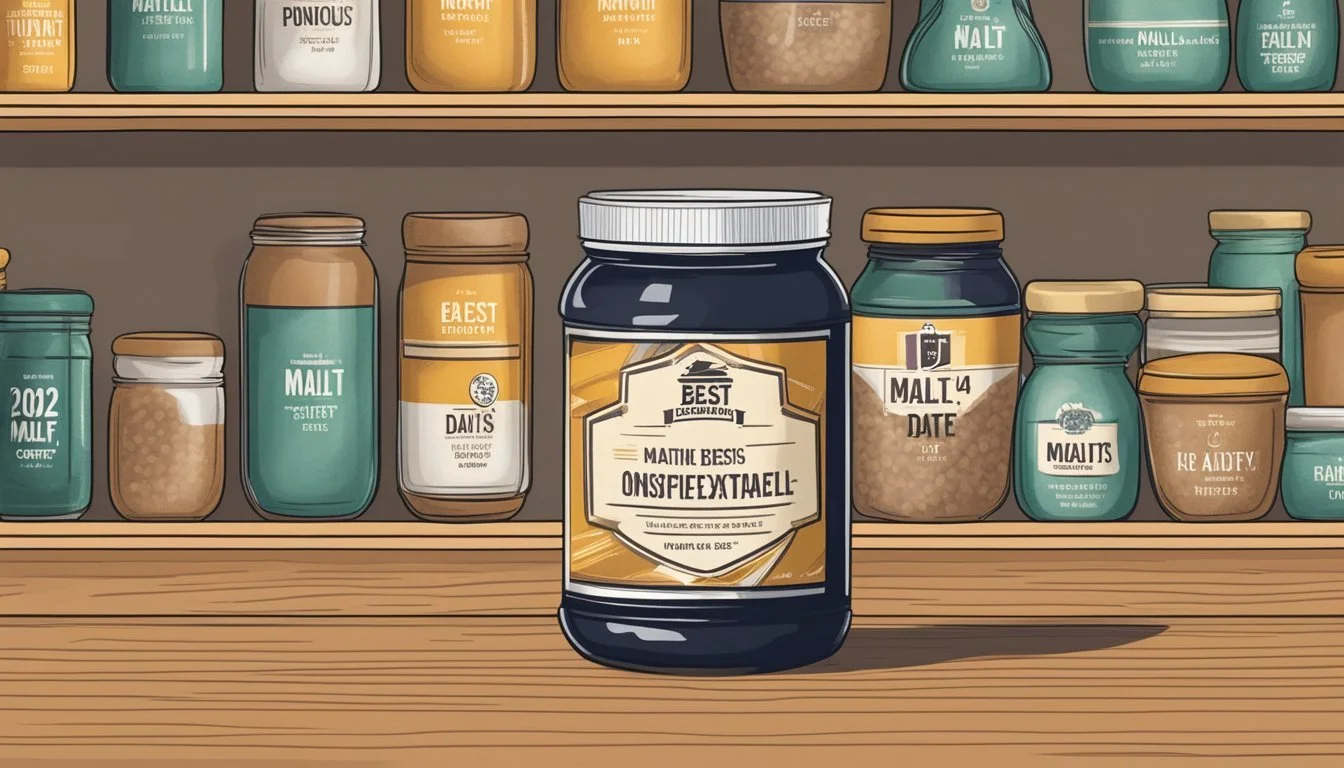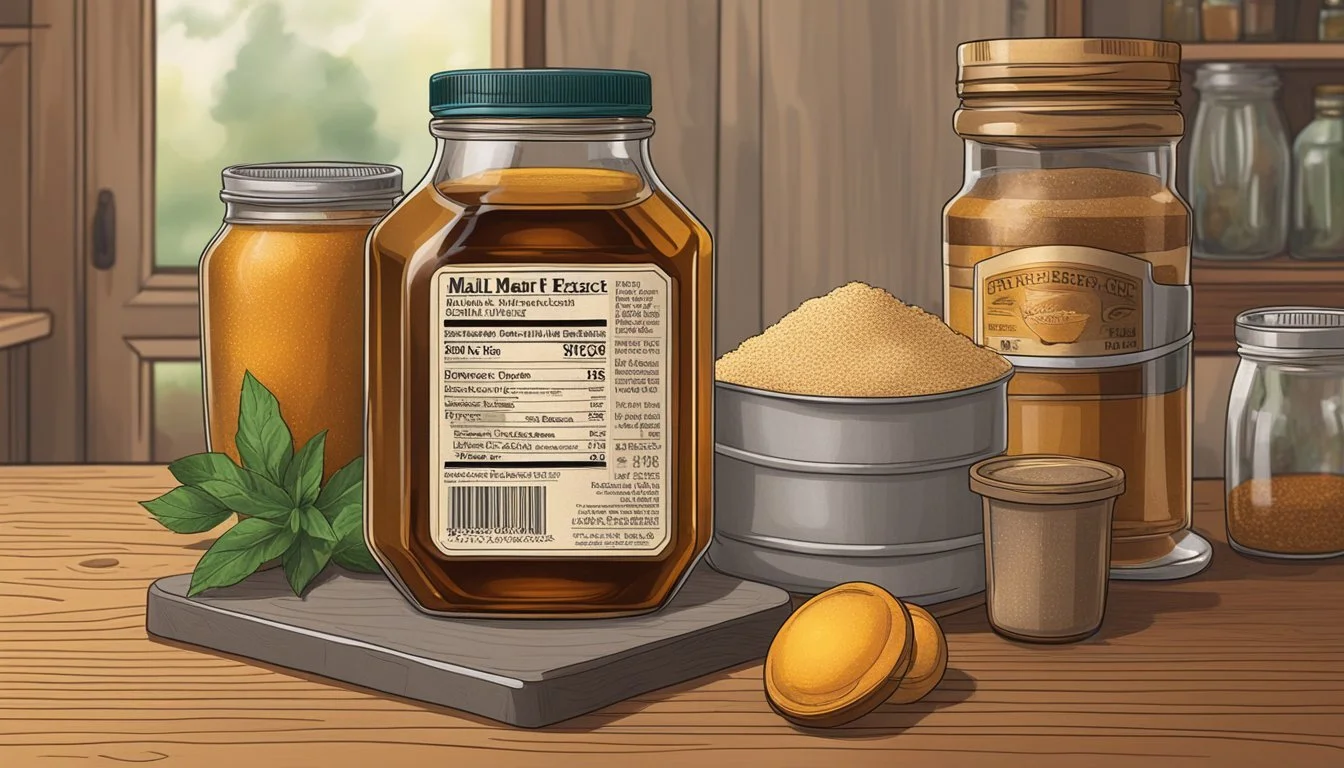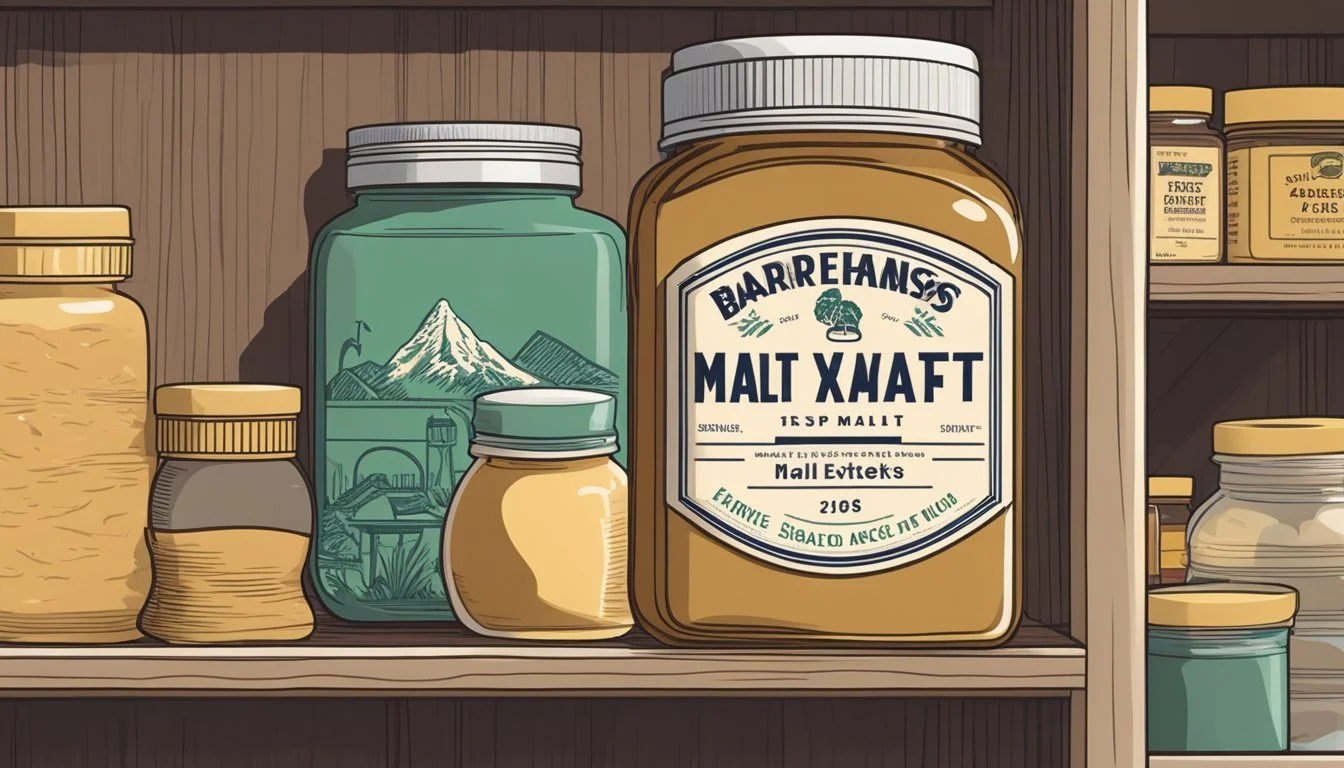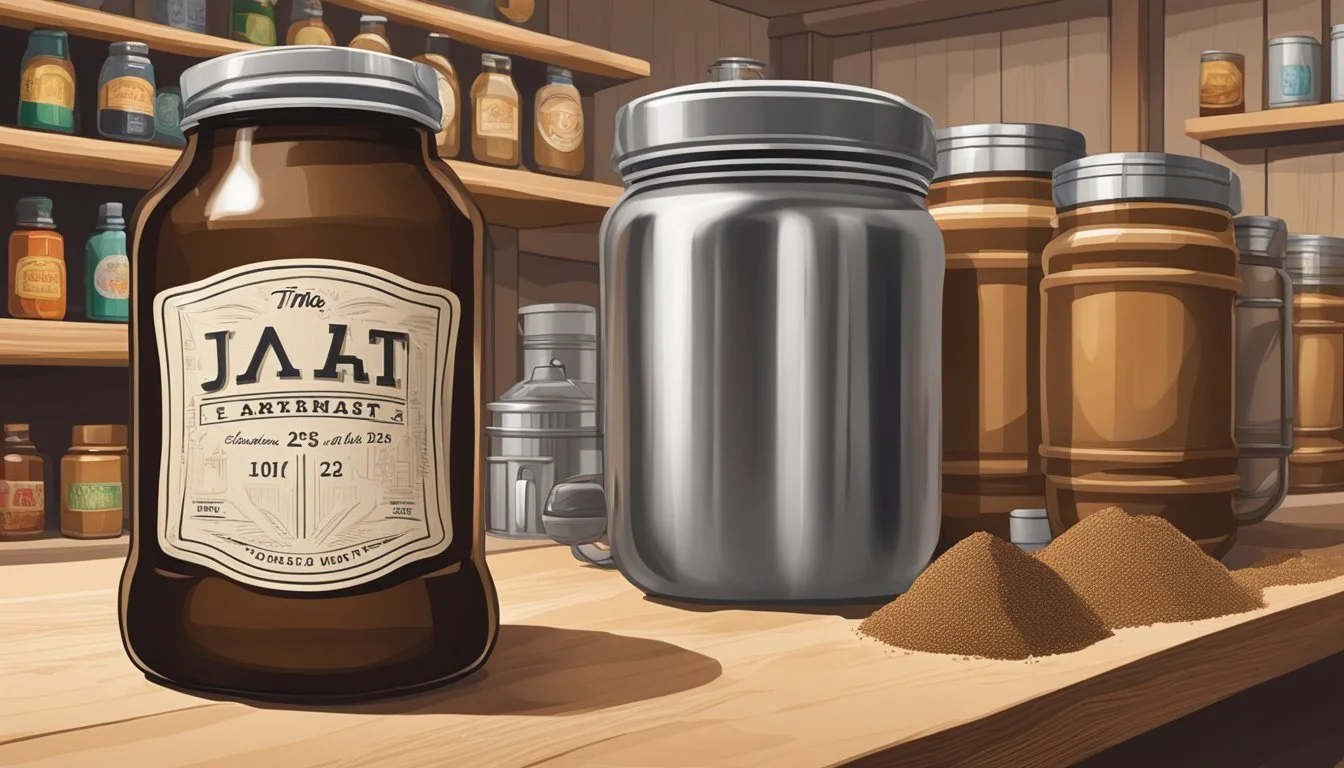How Long Does Malt Extract Last?
Shelf Life and Storage Tips
Malt extract (how long does malt extract last?)is a concentrated syrup or powder made from malted barley and is a common ingredient in brewing beer and baking. Its shelf life is a subject of consideration for brewers and bakers looking to maintain the quality of their products. Liquid malt extract (LME) and dry malt extract (DME) have different storage lifespans, largely due to their respective moisture contents. LME can remain viable for up to two years when unopened and stored under proper conditions, while DME can last even longer due to its dry nature.
To achieve the best shelf life for malt extracts, proper storage practices must be strictly adhered to. For LME, it's crucial to store it in a cool, dark place below 90°F, ensuring minimal exposure to air and moisture to avoid oxidation and degradation. Once opened, LME should be used within three months to ensure freshness. On the other hand, DME's main requirement for long-term storage is protection from moisture; it should be kept dry and well-sealed from oxygen, ideally in a stable environment with temperatures ranging between 50° and 70° F. If these conditions are met, DME can be used for up to about one year without significant loss in quality.
Understanding the storage parameters for malt extracts is essential for maintaining their flavor and quality. Brewers and bakers must consider both type and storage duration for optimal use of malt extracts, as well as the importance of selecting the right storage conditions and containers to extend their shelf life while preserving the desired properties of the product.
Understanding Malt Extracts
Malt extracts are essential ingredients in brewing, providing the necessary sugars for yeast fermentation as well as contributing to the beer's flavor and aroma profiles. They are available in both liquid and dry forms, each with distinct characteristics suitable for different brewing needs.
Types of Malt Extracts
There are two primary types of malt extracts:
Liquid Malt Extract (LME): This syrupy form typically contains about 20% water and offers a longer shelf life when stored in a cool, dark, and dry environment. LME is prized for its ease of use, as it can be readily dissolved into the brewing mixture.
Dry Malt Extract (DME): DME is the dehydrated form of malt extract, with moisture levels usually lower than 5%. It has an even longer shelf life compared to LME and is favored for its stability, as well as being less bulky and easier to store.
Extract Type Moisture Content Shelf Life Preferred Storage Method LME ~20% 2 years Cool, dark, dry place DME <5% Longer than LME Dry, airtight conditions
Malt Extract Composition
Malt extracts are made by extracting the soluble substances in malted grains. These extracts contain:
Sugars: The primary component is various sugars derived from grains, which will be fermented by yeast to produce alcohol.
Flavor and Aroma Compounds: Malt extracts carry flavor and aroma compounds intrinsic to the grains they are derived from, greatly influencing the final beer profile.
Moisture: The amount of moisture is higher in LME than in DME, contributing to their different physical properties and storage lifespans.
By understanding the types and composition of malt extracts, brewers can select the appropriate kind for their brewing process and storage capabilities, ensuring the best outcomes for flavor and aroma in their beer creations.
Factors Influencing Malt Extract Shelf Life
The shelf life of malt extract is critically dependent on appropriate storage conditions and the integrity of packaging which safeguard against quality degradation.
Impact of Storage Conditions
Storage conditions play a decisive role in maintaining the quality of malt extract. Optimal shelf life is achieved by storing the extract in a cool, dry, and dark environment. Temperature fluctuations and humidity should be minimized, as they encourage the degradation of flavors and can lead to spoilage. For instance, Liquid Malt Extract (LME) has a prolonged shelf life when kept away from heat and light, which can accelerate quality loss.
Temperature: Ideal storage is around cool room temperatures.
Light: Extracts should be kept out of direct light.
Humidity and Moisture: A dry environment prevents mold growth and preserves quality.
The Role of Packaging
Appropriate packaging is vital to maximize malt extract shelf life by minimizing exposure to oxygen, which can oxidize the extract. Unopened malt extracts sealed in the original can or nitrogen-flushed plastic bags can last approximately two years. Once opened, transferring the extract to the smallest possible container to reduce airspace and resealing it carefully can minimize oxygen contact and extend shelf life.
Sealing: Airtight sealing is crucial to protect against oxygen and moisture.
Containers: Bulk plastic containers should be avoided for long-term storage.
Material: Packaging in dark, UV-protective materials can be beneficial.
Storage Guidelines for Malt Extract
Proper storage of malt extract is essential to preserve its quality and extend its shelf life. The following guidelines offer specific conditions for optimal storage and prevention of malt extract degradation.
Optimal Storage Temperature and Environment
Malt extract should be stored in a cool, dark place to maintain its quality for as long as possible. Liquid malt extract (LME) typically remains suitable for use for up to 9 months when stored at room temperature. However, refrigerating LME can extend its shelf life.
Recommended storage conditions:
Temperature: For optimal results, it's best to store LME between 50°F and 70°F (10°C to 21°C).
Environment: Choose a dark location with minimal exposure to direct light to prevent darkening and flavor changes.
Refrigerator: Using a fridge is beneficial for delaying spoilage due to the high sugar content of LME, which is prone to fermentation.
Freezer: To further extend shelf life beyond refrigeration, LME can be frozen. Properly stored in the freezer, LME can last approximately 2 years.
Note: When using a freezer, ensure the container is sealed tightly to prevent condensation and freezer burn.
Preventing Malt Extract Degradation
The enemies of malt extract quality include heat, moisture, and oxidation. Dry malt extract (DME) should be kept in a sealed container away from oxygen and moisture to prevent clumping and quality reduction.
Key points to prevent degradation:
Moisture Control: Store DME in airtight containers to protect it from moisture.
Oxygen Exposure: Minimize the amount of air in the container to reduce the risk of oxidation and preserve the aroma and flavor of the extract.
Basement Storage: A basement can provide an ideal storage environment, given it remains cool and has a stable temperature range year-round.
By strictly controlling the storage environment, brewers can largely avoid heat and moisture which can trigger mold and yeast growth, especially in opened containers of malt extract.
Shelf Life of Malt Extract
The shelf life of malt extract is essential for maintaining the quality and flavor of the product. Both liquid malt extract (LME) and dry malt extract (DME) have distinct shelf lives, which brewers must take into account to avoid spoilage and ensure freshness.
Typical Shelf Life for LME and DME
Liquid Malt Extract (LME): Generally, LME has a shelf life of about 9 months when stored at room temperature. If stored in a freezer, LME can last up to 2 years before it begins to degrade.
Dry Malt Extract (DME): DME can remain fresh for up to 1 year when kept dry, sealed from oxygen, and stored away from sunlight, preferably at temperatures between 50° and 70°F.
How to Determine if Malt Extract Has Spoiled
Visual and Olfactory Indicators: The presence of mold or an unusual color change could indicate spoilage. In terms of smell, any off odors or a loss of the characteristic malty aroma can also be a sign of degraded quality.
Flavor Alteration: Malt extract that has passed its expiration date may exhibit a noticeable change in flavor. A stale or off taste is a clear sign that the malt extract should no longer be used for brewing.
It’s imperative for brewers to inspect their malt extract for signs of spoilage to maintain the integrity of their brews. Proper storage is key to extending the shelf life of both LME and DME.
Using Malt Extract in Brewing
In the interest of time and convenience, many homebrewers turn to malt extract as a foundational ingredient in the brewing process to ensure consistent flavor and aroma profiles in their beer.
Brewing Process with Malt Extract
When brewing with malt extract, the process begins with steeping grains to add unique flavors, followed by the boiling of the malt extract. This method simplifies the mashing stage found in all-grain brewing by using pre-extracted sugars from malted grains. Brewers can opt for liquid malt extract (LME), which is syrupy, or dry malt extract (DME), resembling powdered sugar, based on their preference and the beer style they are aiming to produce. The extract is then combined with water to create the wort – a sweet liquid that will be fermented by yeast.
Steep specialty grains (if used) for enhancement of flavor and color.
Boil the malt extract to sanitize the wort and to dissolve the extract completely.
Cool the wort rapidly before fermentation to minimize the risk of contamination.
It's imperative to start with a full-volume boil when possible, as this increases hop utilization and prevents caramelization, leading to a better flavor profile.
Effects of Malt Extract Quality on Beer
The quality of malt extract plays a pivotal role in the final taste and aroma of the beer. Fresh malt extract leads to a beer with vibrant, desired flavors, whereas aged or stale extract can result in an inferior brew with off-flavors. Ensuring the malt extract is stored properly and used within its optimum freshness period – approximately 24 months for unopened malts and up to three months for opened malts – is crucial.
The yeast activity during fermentation feasts on the sugars from the malt extract, producing alcohol and contributing to the beer's final flavor profile. Using high-quality malt extract enhances the beer's quality by ensuring stability in the flavor and aroma during storage and throughout the yeast's fermentation process.
Fresh, high-quality LME or DME is essential for a superior brew.
Proper storage of malt extract maximizes its beneficial impact on flavor and aroma stability.
Advanced Tips and Tricks
In the realm of homebrewing, the longevity and freshness of malt extract are critical for a successful brew. Brewers can take definitive measures to preserve their malt extract, and exploring substitutes can ensure consistency and flexibility in their brewing process.
Extending the Freshness of Malt Extract
Storage Environment: An ideal storage environment is vital for extending the shelf life of malt extracts. Brewers should store malt extract in a cool, dry place where the temperature is consistently between 50° and 70°F. For liquid malt extract (LME), refrigeration can further prolong its quality.
Dry Malt Extract (DME):
Store in airtight containers to prevent exposure to moisture and oxygen.
Vacuum sealing can significantly enhance shelf life.
Uncrushed grains have a longer shelf life compared to pre-crushed ones.
Liquid Malt Extract (LME):
Keep the original container tightly sealed and upright to avoid oxidation.
Dispense LME with sanitized equipment to prevent contamination.
Humidity Control: Malt extract absorbs moisture from the air, which can lead to spoilage.
Use silica gel packs in storage areas to control humidity.
Regularly check for clumping or signs of moisture.
Alternatives and Substitutes for Malt Extract
When Freshness is Compromised: There may be times when a brewer discovers that their malt extract has diminished in freshness. In such cases, knowing suitable substitutes can save a batch of beer.
Grains: A brewer can use fresh grains to create a malt extract alternative. This approach calls for mashing the grains to extract fermentable sugars.
Syrups and Sugars: Non-malt syrups, like corn syrup or honey, can be used in conjunction with or as a substitute for malt extract. They alter flavor profiles but can provide the necessary sugars for fermentation.
Yeast Starter: If a brewer is concerned about the quality of their malt extract, a yeast starter can help ensure a healthy and strong fermentation, making the most out of available sugars.
It's important that any substitute aligns with the desired flavor profile and fermentable sugar content required for the beer being brewed.
Industry Insights and Expert Opinions
This section sheds light on professional assessments concerning the longevity and application of malt extracts, particularly focusing on their brand evaluations and emerging usage trends.
Reviews of Brands and Types of Malt Extracts
When industry experts review both liquid malt syrup and dry malt products, two brands frequently mentioned for their quality and consistency are Briess and CBW. Briess, known for its versatile product range, offers malt extracts that are well-regarded in the homebrewing community for their contribution to beer's flavor and stability. Similarly, CBW malt extracts are noted for their purity and are favored among brewers for their excellent fermentability and rich aromatic qualities. Both brands provide extracts that can sustain their quality for up to 24 months when unopened and properly stored.
Emerging Trends in Malt Extract Usage
The use of malt extracts is not static; brewers are constantly exploring new techniques to enhance beer making. A significant trend is the incorporation of malt extracts as a natural source of color and flavor. This is not limited to beer but extends to other beverages and food. The industry is observing a rising preference for malt extracts in creating specialty beers, where the synergy of the extract with yeast, hops, and other ingredients is pivotal. Experts also notice a trend towards malt extract applications beyond brewing, including pharmaceuticals, suggesting new roles where its stability and aromatic properties can be of great benefit.









